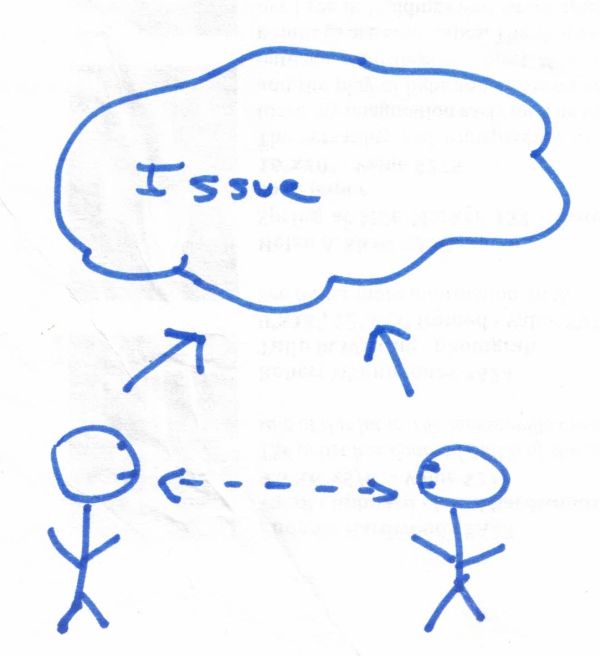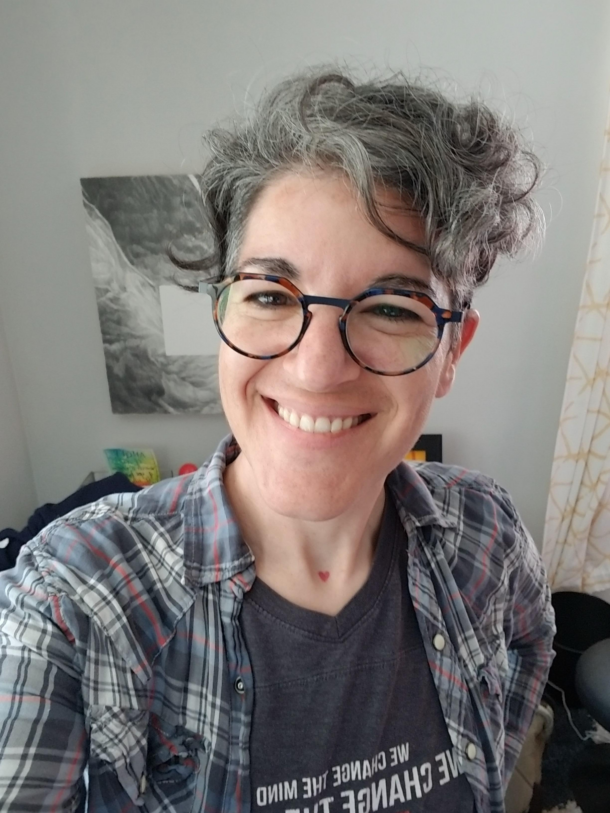What does it mean – what does it look like, act like, feel like – to allow for rage and love at the same time?
This is the question that Valarie Kaur’s moving and intimate book, See No Stranger: A Memoir and Manifesto of Revolutionary Love has been inviting me to ask over and over. Among other questions, that is.
A part of me doesn’t get it at all. That part of me looks back at my own life when I have truncated experiences of rage (or anger, disappointment, etc) by unconsciously transmuting it into depression or shutting it down with a focus on compassion for or understanding of whoever enacted the problematic behavior.
A part of me totally gets it, has even created an illustration for my clients that I tend to hold up to my webcam in the midst of conversations about interpersonal discord.

Most of us, when experiencing discord with a loved one, will unconsciously and immediately see our partner as the problem and, generally, that will be reciprocated, hence the dotted line. So there we are, staring at one another, all of our frustrations focused on the false dichotomy of right and wrong, fueled by rage or one of its iterations.
When we invoke love – that is, when we remember the humanness of that person, when we consciously recall their value and importance to us – we are then able to regroup by placing the bit of discord as the cloud above us both, an independent issue that we can partner in understanding and perhaps even resolving.
Again, we have the switch from rage to love. Except, when we allow them to co-exist, this rage and this love, we have the makings of not just positive change for our intimate relationships but also, as Kaur suggests, for broad social change.
Rage is our emotional experience of injustice, whether intimate injustice (such as infidelity in a monogamous relationship or domestic violence) or more global injustice (such as systemic racism, sexism, xenophobia or transphobia). Rage is a built-in mechanism to alert us to action, to motivate us to make change.
Love – not the squishy rom-com variety but the gritty determined stubborn one – is the mechanism that keeps us from becoming the injustice we oppose. It’s the tool for staying grounded in our values rather than getting swept up by reactivity.
That is, if we engage only in rage when approaching those who reinforce systemic and interpersonal injustice, then we are dehumanizing them just as they are dehumanizing those they oppress (whether consciously or by default). If we instead practice allowing the rage to exist while we consciously bring forth love, then we’re positioning ourselves to make the most of both the rage and the love – to make mighty world change in a way that invites our best selves to the party.
I don’t know about you, but that is the world I want to live in.
I have a LOT of questions and thoughts arising as I read See No Stranger which is why I formed the Bigger Badder Book Club. If you’d like to get into some asynchronous convo with the crew (leading to a zoom gathering), let me know. If you’d like to explore your own intersection of rage and gritty determined stubborn love, let’s schedule time to connect, just you and me.
